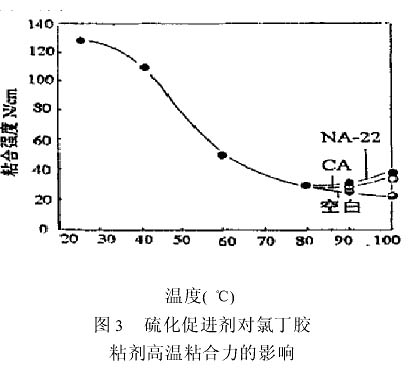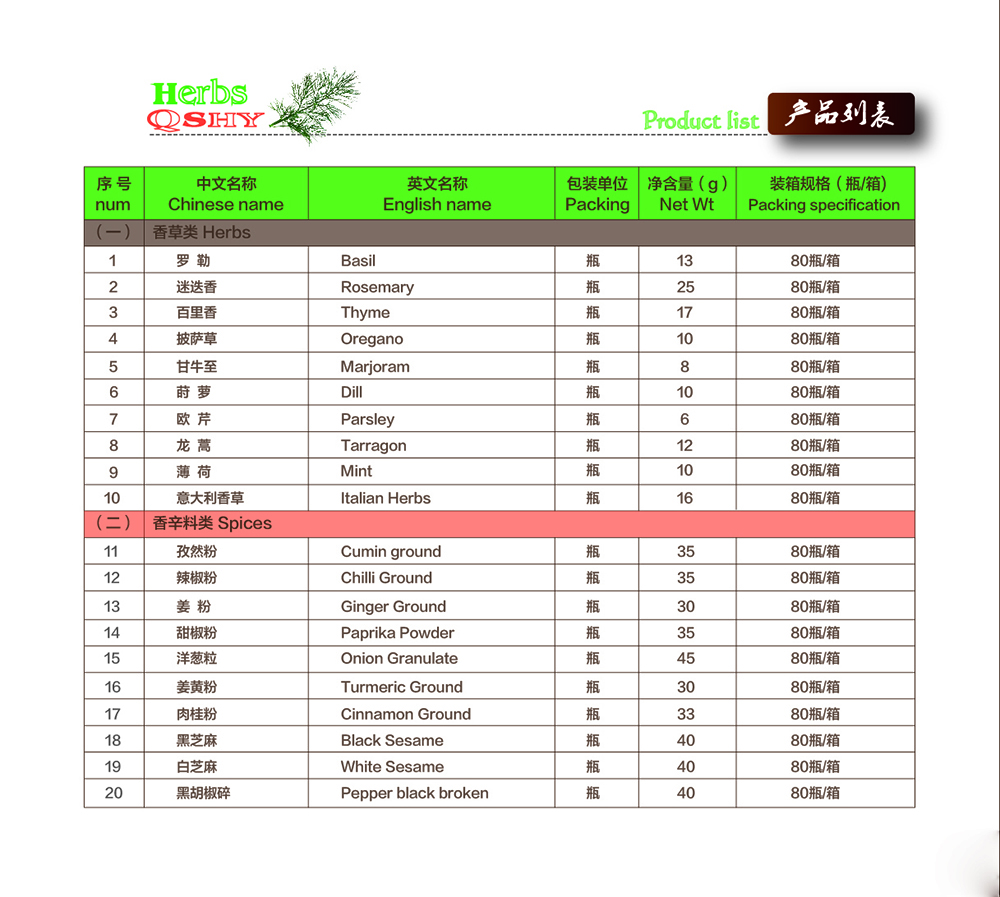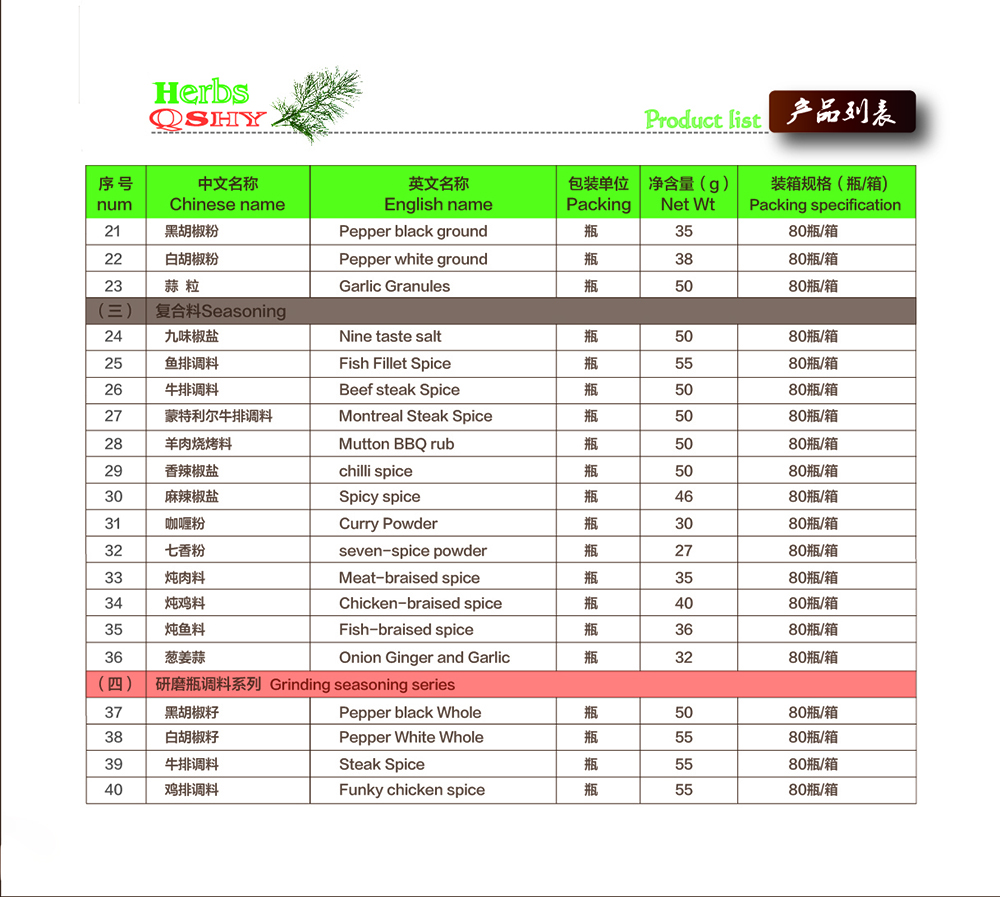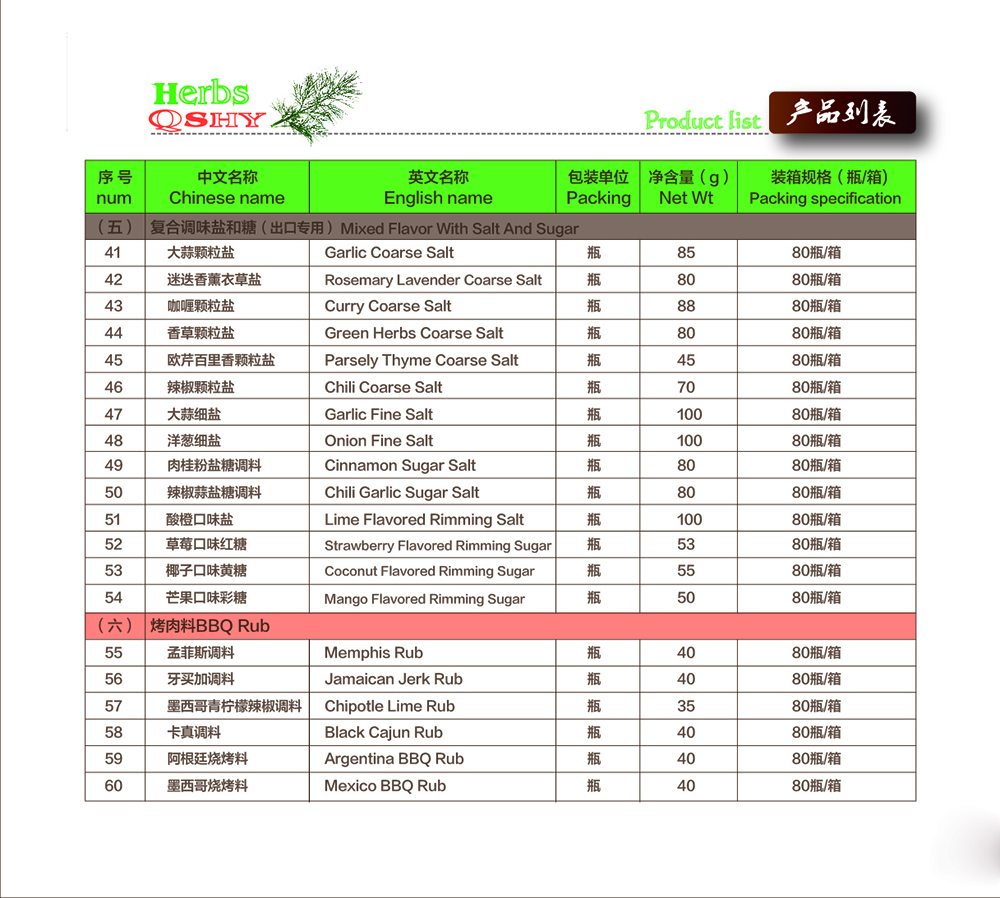A blend ratio of neoprene rubber A-120 and carboxylated polychloroprene rubber 510L was 1:1. According to the above experimental procedure, a neoprene adhesive with a solid content of 20% was obtained, and 50% by weight of neoprene was added. The chelate resin syrup made from the base phenolic resin is used as a blank, and the accelerator NA-22, CA with the amount of neoprene 2% is respectively added and tested at 25°C, 40°C, 60°C, 80°C, 100°C. Adhesion strength at °C, the results are shown in Figure 3.

From Fig. 3, the adhesive strength of the neoprene adhesive did not improve at room temperature after the accelerator was added. However, as the temperature increased, the adhesive strength of the adhesive rapidly decreased and reached a minimum value of 29 N/cm at 85°C. Only when the temperature reaches 100°C, the adhesive strength of the neoprene adhesive added with the accelerator NA-22 rises back to 38N/cm, and the adhesive strength of the neoprene adhesive added with the accelerator CA only rises back to 36N/cm because it is normal temperature. The vulcanization accelerator does not promote cross-linking, but when the temperature is raised to 100°C, the vulcanization accelerator accelerates the speed of vulcanization and the degree of vulcanization.
2.4 Effect of Isopropyl Alcohol on Viscosity Stability of Glue
The mixing ratio of neoprene rubber A-120 and carboxylated polychloroprene rubber 510L was 1:1, and 0%, 1%, 2%, and 4% isopropyl alcohol were added to the above mixed solvents, respectively, according to the experimental procedure. A neoprene adhesive with a solid content of 20% is added with a chelating resin syrup made of tert-butyl phenolic resin with a neoprene content of 50%, and then made into a chlorine-based rubber with a 2% accelerator NA-22. The adhesive was tested for its viscosity and the viscosity of the glue at 7 days, 14 days, 28 days, 35 days, and 56 days. The results are shown in Figure 4.

It can be seen from Figure 4 that when isopropyl alcohol is not added (ie, the addition amount is 0%), the viscosity of the neoprene solution rises rapidly with time, from the initial 4.5 Pa.s/25°C, to 7 days, to 5.4 Pa. .s/25°C, rises to 6.7 pa.s/25°C in 14 days, rises to 8.2 pa.s/25°C in 28 days, rises to 11.6 pa.s/25°C in 35 days, rises to 19.8 pa.s in 56 days. /25 °C, so it can not be painted. With the increase in the amount of isopropanol, the viscosity of the neoprene solution gradually decreased with time. When the amount of isopropyl alcohol was 4% of the amount of the mixed solvent, the viscosity of the neoprene solution was already very stable: from the initial viscosity of 3.6. At pa.s/25°C, the viscosity remained essentially unchanged at 7 days, followed by a slight increase. At 56 days, the viscosity was 4.1 pa.s/25°C, an increase of less than 15%. This is due to the large reactivity of carboxylated chloroprene rubber, which is easily cross-linked with hydroxymethyl groups on magnesium oxide or macromolecular chelating resins, leading to an increase in the viscosity of the adhesive during storage and a decrease in the viscosity stability of the adhesive, while adding an appropriate amount. Isopropanol inhibits their reaction and stabilizes the viscosity of the glue. When isopropanol volatilizes, it begins to crosslink at room temperature and exerts its adhesive force.
3 Conclusion
As a neoprene adhesive, a high Mooney viscosity chloroprene rubber is used, and a chelating resin is added to improve its heat resistance; adding a vulcanization accelerator can improve the heat resistance only when the use temperature exceeds 100°C; Using carboxylated chloroprene rubber, the effect is better, but the cost is increased, and special ingredients technology is required to ensure the stability of the glue. This article uses a neoprene, carboxylated chloroprene rubber mixed adhesive prepared by the adhesive, the glue is stable, the use of technology is simple, and greatly improved heat resistance. The basic formulas are: (1) High Mooney neoprene A-120 and carboxylated neoprene 510L with a mixing ratio of 1:1. (2) Mixed solvent: toluene/n-hexane/ethyl acetate/isopropanol, volume ratio 32/32/32/4. (3) Using FRJ551 p-tert-butyl phenolic resin to form a chelating resin with MgO, wherein the amount of p-tert-butyl phenolic resin is 50% of the amount of neoprene rubber. (4) Add NA 2 with an amount of neoprene 2% accelerator.
Source: 21st Century Fine Chemicals Network
We are a company specializing in the production of food flavors. Our main products are herbs, spices, seasoning, grinding seasoning series, mixed flavor with salt and sugar, BBQ Rub. Our raw materials are high quality materials imported from Germany, and all indicators meet EU standards. We do not artificially add substances other than the product itself or malicious adulteration in order to reduce product cost, reduce processing difficulty or enhance aroma. Our products have been selling well for ten years, and are highly praised by customers at home and abroad for their high and unique quality.
About Product Safety
1. We entrust a third party to conduct up to hundreds of pesticide residue testing on all purchased raw materials according to export standards.
2. We test the raw materials of lead, arsenic and other heavy metals.
3. We test various physical and chemical indicators (moisture, ash, acid-insoluble ash, etc.) and impurities.
We are determined not to use raw materials that do not meet the above three criteria.
About Raw Material
Our raw materials, whether imported or domestic, are selected from high-quality and pure raw materials from the main producing areas, and supplied by local qualified suppliers to maintain the stable quality of the products and eliminate various risks arising from counterfeit and shoddy raw materials. The product has high quality and pure color, fragrance and taste.
About Production Process
We have created a pure natural stew compound technology: this technology can smash the more than ten kinds of spices to make pellets. Adding the compound flavor to the soup can quickly dissolve in water, which is convenient for meat absorption. In order to maintain a pure natural flavor and healthy quality, all products are not added with any additives.
About Packaging
Our specially-designed high-quality glass bottles use clean white glass materials that meet the requirements of high-standard, and are free of impurities from foods. Moreover, in the production process of the bottle, the roundness, thickness, level and smoothness of the bottle body are strictly tested by using advanced testing equipment to ensure the impact strength and better sealing performance of the bottle.



Food Seasoning,Food Grade Seasonings,Food Flavor Seasoning,Fried Food Seasoning
Jinan Dark Intelligent Facilities Co.,Ltd , http://www.cndarkcvs.com